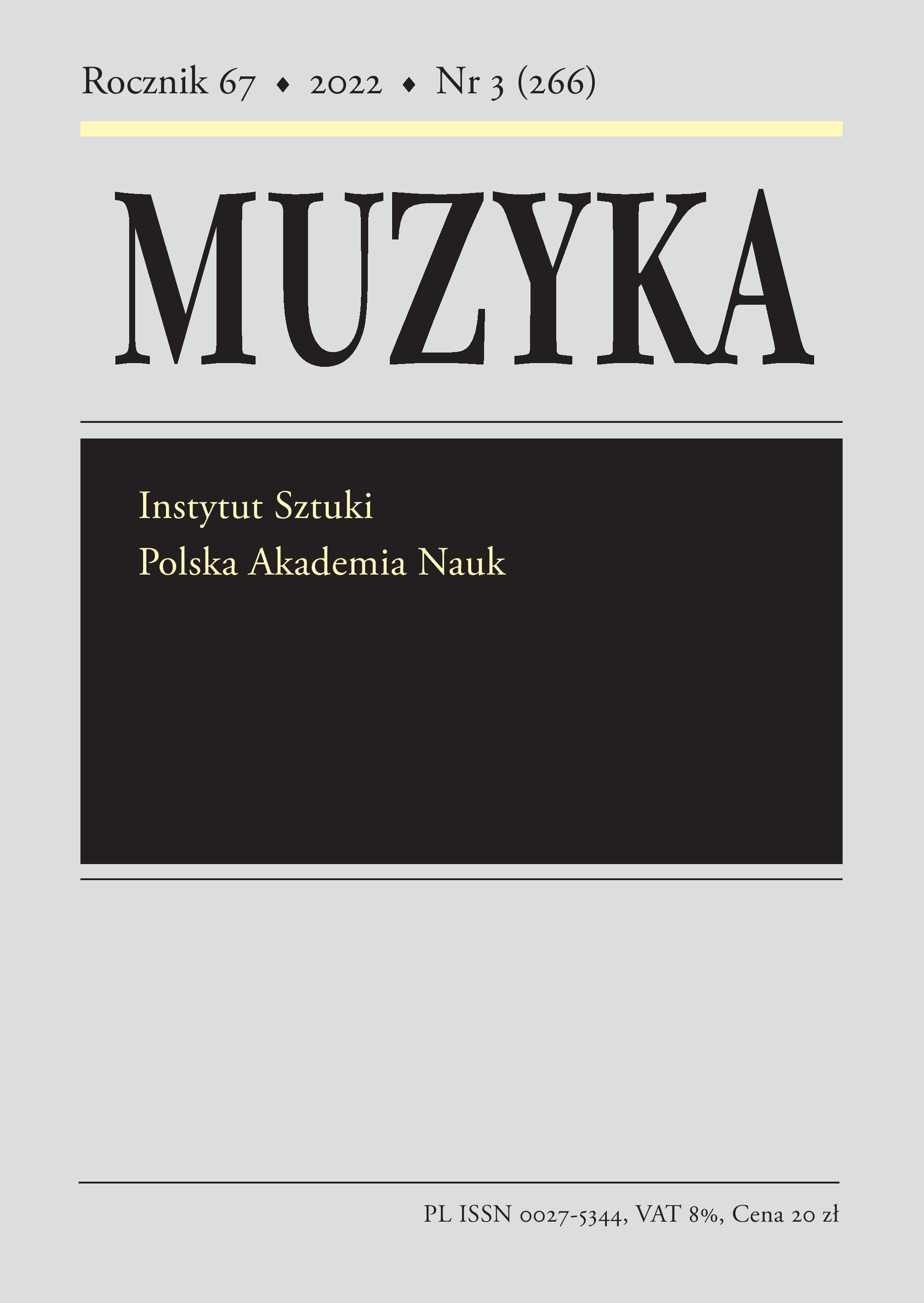Dominikańskie procesje różańcowe i tradycja śpiewanych różańców na ziemiach polskich w świetle procesjonału PL-Kd 75L oraz innych źródeł XVIII i początku XIX wieku
Dominican Rosary Processions and the Tradition of Sung Rosaries in the Polish Lands, in the Light of the Processional PL-Kd 75L and Other Eighteenth- and Early Nineteenth-Century Sources
Author(s): Dominika GrabiecSubject(s): Music, Sociology of Religion
Published by: Instytut Sztuki Polskiej Akademii Nauk
Keywords: processional; procession; brotherhoods of the rosary; rosary preyer; Dominican Order; post-Tridentine liturgy; plainchant; Polish music
Summary/Abstract: The processional kept in Krakow’s Archives of the Polish Province of the Dominican Order (shelf mark 75L) is probably the only surviving handwritten Dominican processional from the post-Tridentine period. Despite its modest dimensions, it offers a unique record of readings, prayers, and songs for the solemn procession on the Feast of the Circumcision of Christ and readings for the Feast of the Rosary, complete with numerous notes on the active participation of the Rosary Confraternity, which led the singing of the rosary also during Corpus Christi processions and of Easter songs at the Resurrection procession. Several factors, including the codicological features of the manuscript and variants of rosary prayers (the same as those in a printed prayer book of 1752), indicate that the manuscript may have been compiled in the second half of the eighteenth century. The six rosary records found during the archival research all differ from one another to some extent in linguistic variants, sequence and number of prayers, instructions for their use in prayer practice, and even the contents of some song verses. This extended sung rosary form, which resembles the Liturgy of the Hours, took shape in the early seventeenth century in Rome and was then disseminated throughout Italy, later also in other countries. Having reached Poland by the early eighteenth century at the latest, it was translated from Latin to Polish in its entirety, and the Gregorian hymn was likewise replaced with a Polish translation with a new melody. The Polish version also adds songs preceding each section, as well as brief sung verses that substitute for the meditations preceding the individual mysteries of the Rosary. That sung rosaries were widely known in old Poland is confirmed not only by the surviving copies of prayer- and songbooks published in Kraków, Poznań, Warsaw, Vilnius, and other places, but also by mentions of this practice in Jędrzej Kitowicz’s ‘Description of Customs and Culture under the Reign of Augustus III’ by Jędrzej Kitowicz, and in the Dominican Processional 75L.
Journal: Muzyka
- Issue Year: 67/2022
- Issue No: 3
- Page Range: 52-77
- Page Count: 26
- Language: Polish

